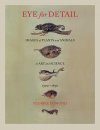![Eye for Detail Eye for Detail]()
Click to have a closer look
About this book
Customer reviews
Biography
Related titles
About this book
Image-transforming techniques such as close-up, time lapse and layering are often linked to the age of photography, but they were already being used half a millennium ago for the purposes of identification and study. This is why Renaissance drawings of plants and animals are immediately recognizable to the modern viewer. Discussing natural history images made throughout Europe during the sixteenth century, Eye for Detail traces the early history of image manipulation techniques.
Florike Egmond shows how the roles and formats of images in nature study changed dramatically during this period, as high-definition naturalistic representation became the rule, and large image collections of plants and animals were created for identification and illustration. She investigates what the use of visual techniques like magnification can tell us about how early modern Europeans studied and ordered living nature, and focuses on how attention to visual detail reveals the overriding question that continued to occupy the minds of naturalists from antiquity well into the modern age: the secret of how life originates.
Featuring many striking colour illustrations that have never been published before, this beautiful volume is an arresting guide to the large Continental collections of naturalia drawings and an absorbing study of natural history art of the sixteenth century.
Customer Reviews
Biography
Florike Egmond is a cultural historian and researcher at the University of Leiden. She lives in Rome.
By: Florike Egmond(Author)
280 pages, 128 colour illustrations
"In this important, scholarly, and visually delightful volume, Florike Egmond presents a strikingly original overview of the burgeoning years of natural history depiction. More than mere illustrations to complement texts (as in later printed works), these early drawings formed visual components of collections in which a sense of nature itself was first constructed and given order: it was the drawings themselves that were assembled to form archives that allowed early naturalists to begin to evolve a coherent view of the natural world – what Linnaeus would later describe as the 'ordering of the natural universe'. In compiling these graphic representations of natural specimens their authors displayed much more than their individual merits in art-historical terms: they also reveal the genesis of a visual vocabulary for representation that would remain influential for centuries to come. The volume's title forms an apt metaphor for Florike Egmond's forensic treatment of these images from an era when art and science intersected on equal terms to formulate a world view hitherto beyond conception: her lucid text allows all of us to appreciate the quietly revolutionary advances in understanding brought about by these innovatory observers of nature."
– Arthur MacGregor, author of Curiosity and Enlightenment: Collectors and Collections from the Sixteenth to the Nineteenth Century







































